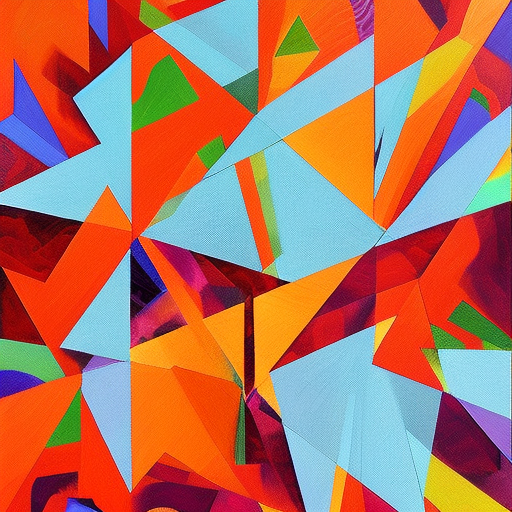Summary:
Orphism was an art movement that emerged in the early 20th century, characterized by its use of vibrant colors, geometric shapes, and abstract forms. It was influenced by the ideas of French poet Guillaume Apollinaire and drew inspiration from the ancient Greek myth of Orpheus. Orphism sought to convey a sense of harmony and spiritual transcendence through its abstract compositions. The movement had a significant impact on the development of abstract art and played a crucial role in the evolution of modernism.
Introduction:
Orphism, also known as Orphic Cubism, was an art movement that emerged in the early 20th century as a response to the rapid changes occurring in society and the arts. It was a form of abstract art that sought to break away from traditional representation and explore new ways of expressing reality. The movement was heavily influenced by the ideas of French poet Guillaume Apollinaire and drew inspiration from the ancient Greek myth of Orpheus, the legendary musician and poet.
Characteristics of Orphism:
Orphism was characterized by its use of vibrant colors, geometric shapes, and abstract forms. Artists associated with the movement, such as Robert Delaunay and Sonia Delaunay-Terk, sought to create compositions that conveyed a sense of harmony and spiritual transcendence. They believed that color and form could evoke emotions and create a spiritual experience for the viewer. The movement embraced the use of pure colors, often applied in overlapping or concentric circles, to create a sense of movement and rhythm.
Influence of Orphism:
Orphism had a significant impact on the development of abstract art and played a crucial role in the evolution of modernism. The movement challenged traditional notions of representation and paved the way for the exploration of new artistic possibilities. The use of vibrant colors and abstract forms in Orphic compositions influenced subsequent art movements, such as Abstract Expressionism and Op Art.
Relationship with Cubism:
Orphism is often referred to as Orphic Cubism because of its close association with the Cubist movement. Both movements shared an interest in breaking down forms and exploring multiple viewpoints. However, while Cubism focused on the fragmentation and analysis of objects, Orphism sought to convey a sense of spiritual and emotional depth through the use of color and form. Orphism can be seen as a more lyrical and poetic interpretation of Cubism.
Notable Artists:
Several artists were associated with the Orphism movement, including Robert Delaunay, Sonia Delaunay-Terk, František Kupka, and Francis Picabia. Robert Delaunay is often considered the founder of Orphism and is known for his use of vibrant colors and circular forms. Sonia Delaunay-Terk, his wife, also made significant contributions to the movement, particularly in the field of textile design. František Kupka and Francis Picabia were also influential figures in the development of Orphism, each bringing their unique style and approach to the movement.
Legacy:
Orphism had a lasting impact on the art world, influencing subsequent generations of artists. Its emphasis on color and form as a means of expression paved the way for the development of abstract art and contributed to the broader shift towards non-representational art in the 20th century. Orphism’s exploration of spirituality and the transcendental aspects of art also resonated with later movements, such as Abstract Expressionism, which sought to convey emotional and spiritual experiences through abstract compositions.
In conclusion, Orphism was an art movement that emerged in the early 20th century, characterized by its use of vibrant colors, geometric shapes, and abstract forms. Influenced by the ideas of Guillaume Apollinaire and inspired by the myth of Orpheus, Orphism sought to convey a sense of harmony and spiritual transcendence. The movement had a significant impact on the development of abstract art and played a crucial role in the evolution of modernism. Its legacy can be seen in subsequent art movements and the ongoing exploration of color, form, and spirituality in art.












